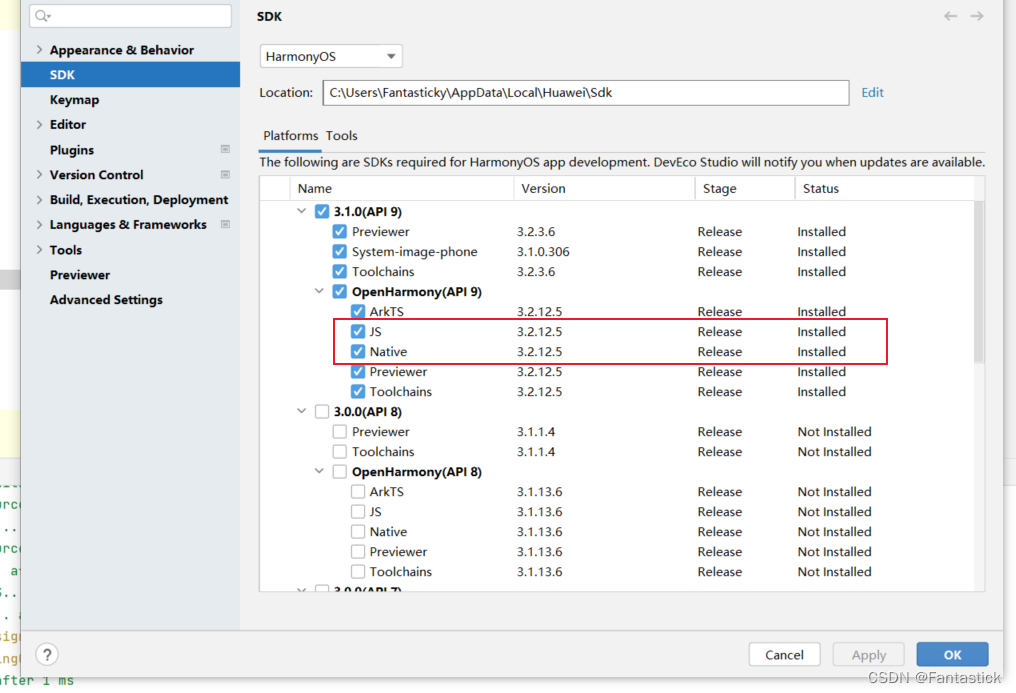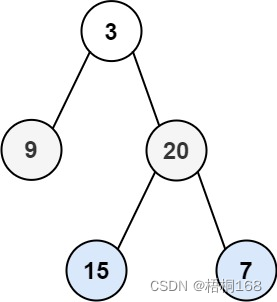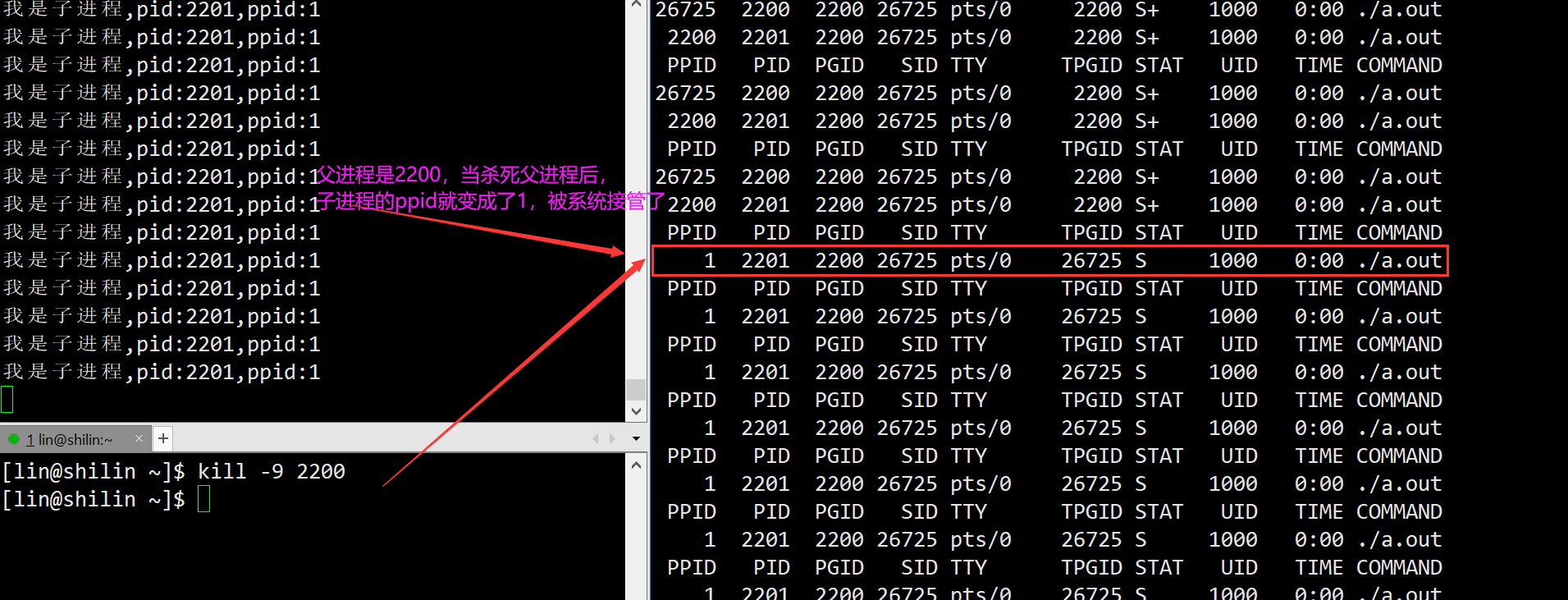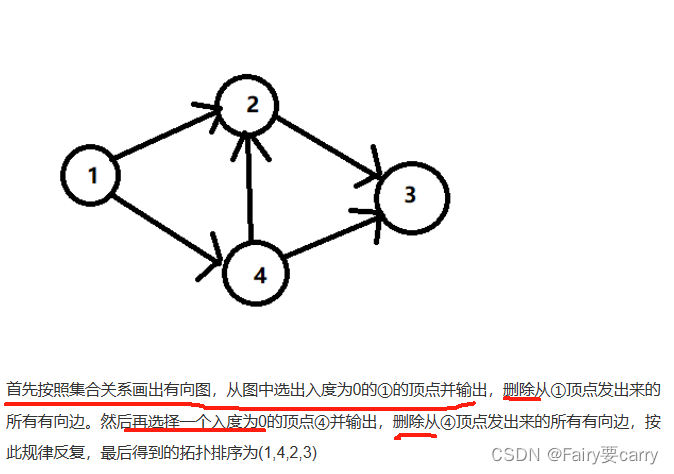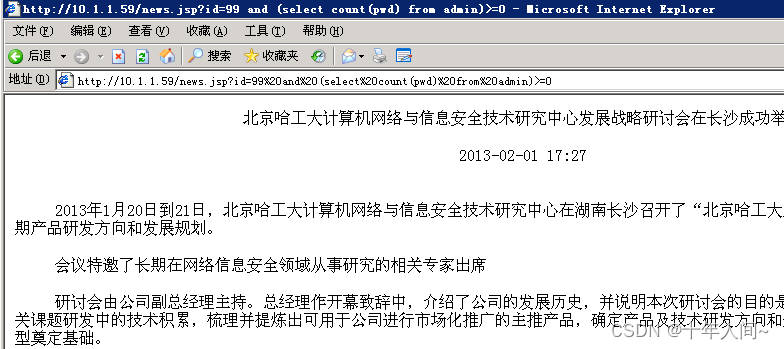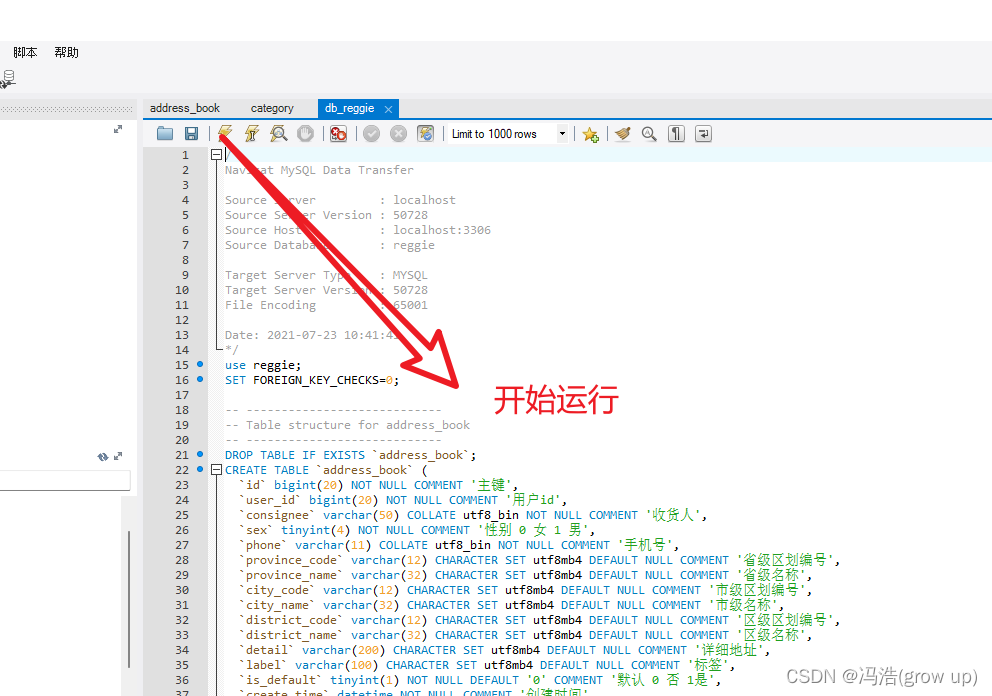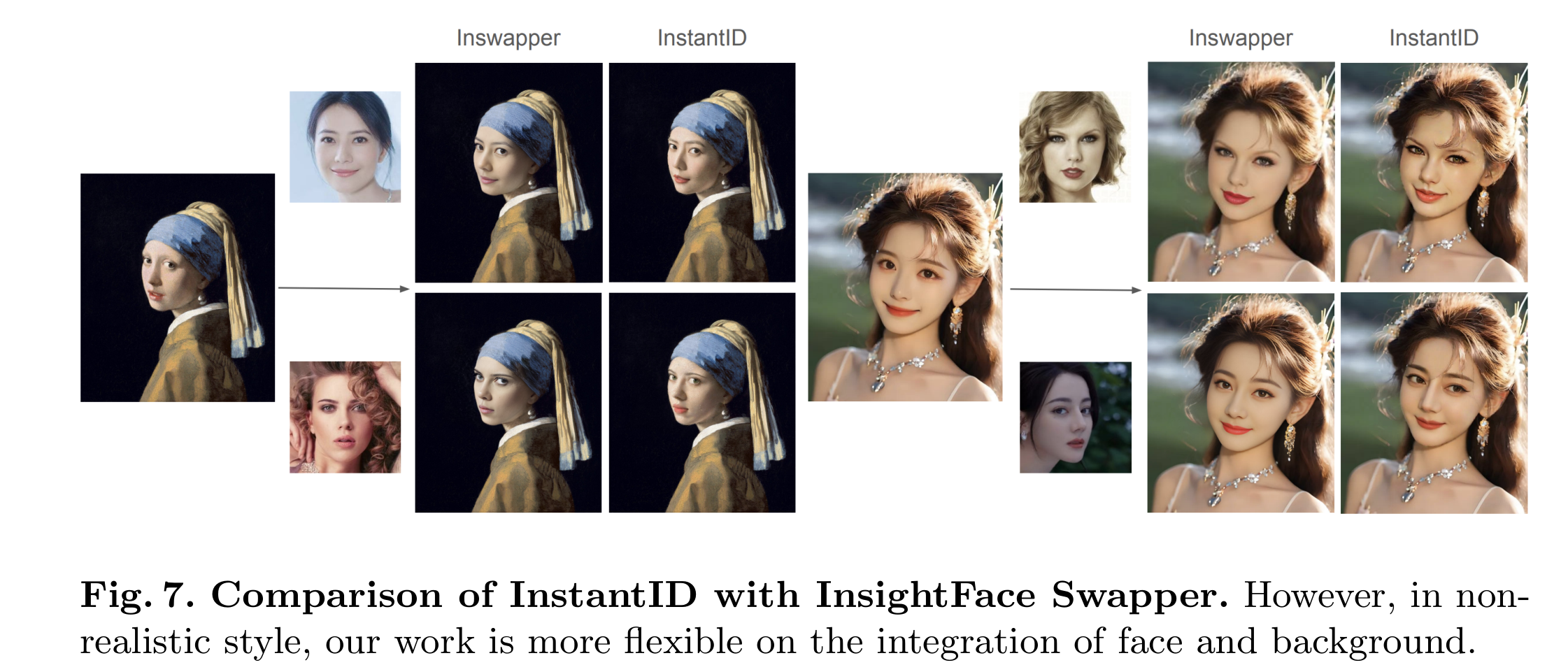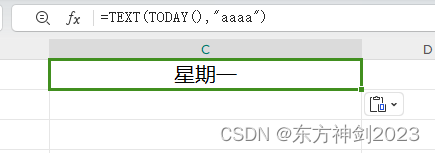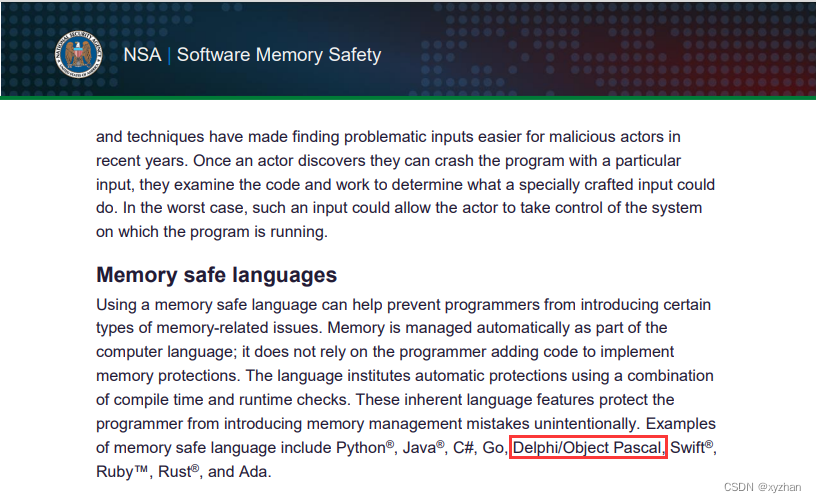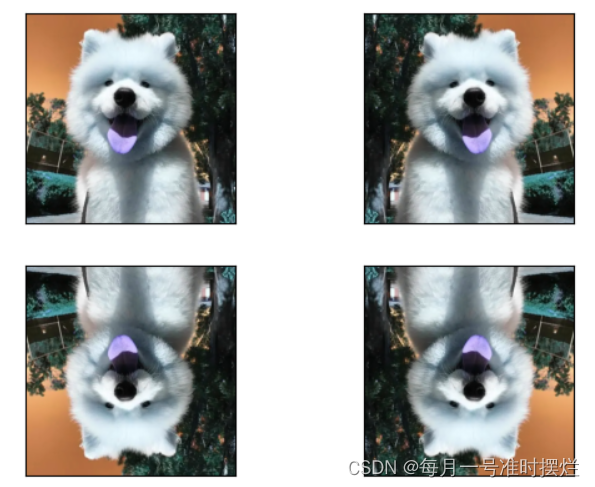一、线程的局部存储
1.实现多线程
如果我们想创建多线程,我们可以用下面的代码类似去实现
#include <iostream>
#include <pthread.h>
#include <string>
#include <cstdlib>
#include <unistd.h>
#include <thread>
#include <vector>
using namespace std;
#define NUM 10
struct threadData
{
string threadname;
};
string toHex(pthread_t tid)
{
char buffer[128];
snprintf(buffer, sizeof(buffer), "0x%x", tid);
return buffer;
}
void* threadRoutine(void* args)
{
threadData *td = static_cast<threadData*>(args);
int i = 0;
while(i < 10)
{
cout << "pid: " << getpid() << ", tid : " << toHex(pthread_self()) << ", threadname : " << td->threadname << endl;
sleep(1);
i++;
}
delete td;
return nullptr;
}
void InitThreadData(threadData* td, int number)
{
td->threadname = "thread-" + to_string(number);
}
int main()
{
vector<pthread_t> tids;
for(int i = 0; i < NUM; i++)
{
//注意这种方式不可以,因为都在主线程的栈中定义的变量。一旦for循环每循环一次
//td也要随之销毁掉。这里传入的全部都是野指针了。
// threadData td;
// td.threadname = "";
// td.tid = "";
pthread_t tid;
threadData *td = new threadData;
InitThreadData(td, i);
pthread_create(&tid, nullptr, threadRoutine, td);
tids.push_back(tid);
sleep(1);
}
for(int i = 0; i < tids.size(); i++)
{
pthread_join(tids[i], nullptr);
}
return 0;
}
运行结果如下图所示
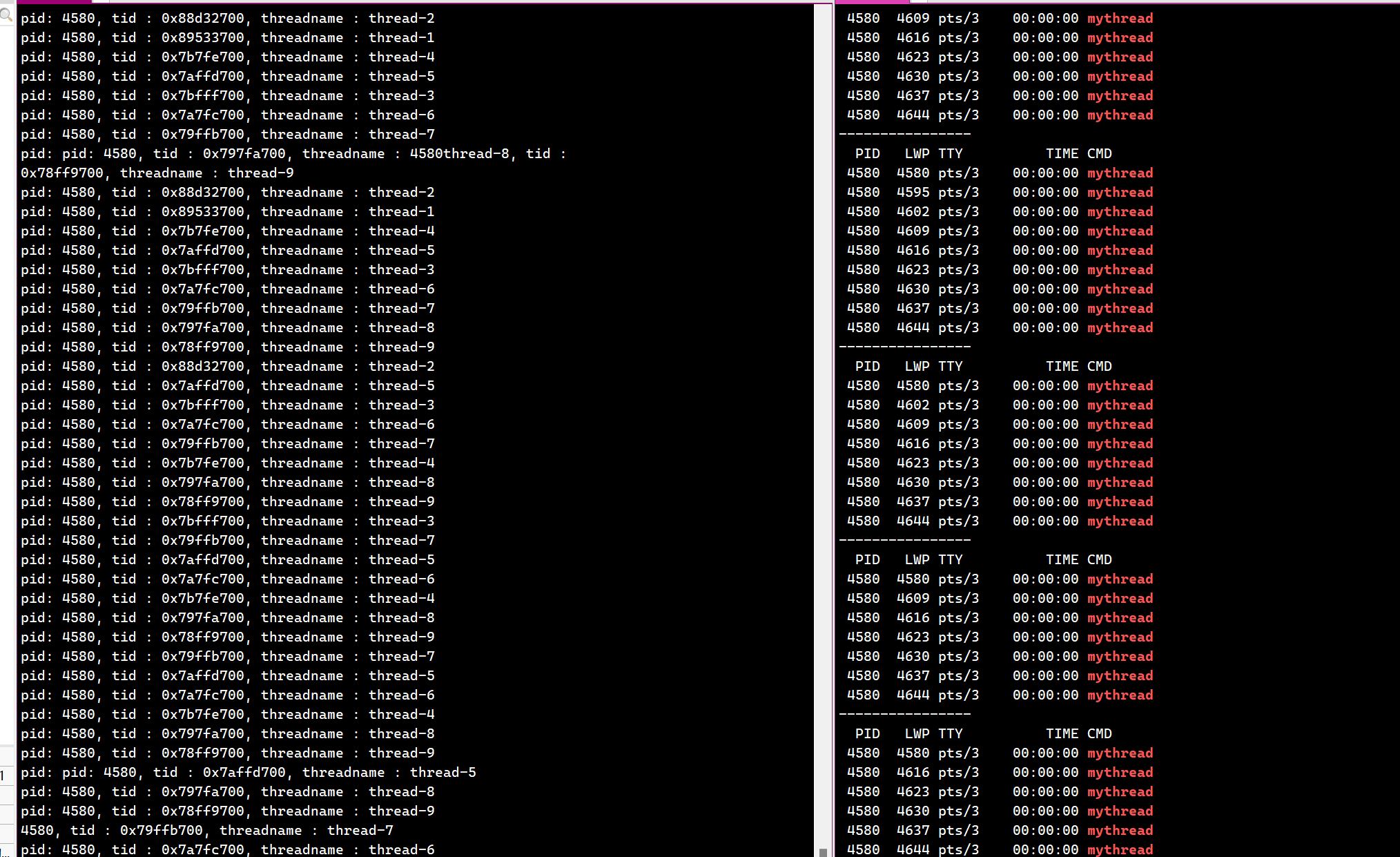
在这里我们就发现了一个问题:
所有的线程,执行的都是这个函数
一旦一个线程修改了数据,其他线程看到这个数据都会被修改
2.线程有独立的栈结构
当代码如下的时候
#include <iostream>
#include <pthread.h>
#include <string>
#include <cstdlib>
#include <unistd.h>
#include <thread>
#include <vector>
using namespace std;
#define NUM 3
struct threadData
{
string threadname;
};
string toHex(pthread_t tid)
{
char buffer[128];
snprintf(buffer, sizeof(buffer), "0x%x", tid);
return buffer;
}
void* threadRoutine(void* args)
{
int test_i = 0;
threadData *td = static_cast<threadData*>(args);
int i = 0;
while(i < 10)
{
cout << "pid: " << getpid() << ", tid : " << toHex(pthread_self())
<< ", threadname : " << td->threadname
<< ", test_i: " << test_i << ", &test_i: " << toHex((pthread_t)&test_i) << endl;
sleep(1);
i++;
test_i++;
}
delete td;
return nullptr;
}
void InitThreadData(threadData* td, int number)
{
td->threadname = "thread-" + to_string(number);
}
int main()
{
vector<pthread_t> tids;
for(int i = 0; i < NUM; i++)
{
//注意这种方式不可以,因为都在主线程的栈中定义的变量。一旦for循环每循环一次
//td也要随之销毁掉。这里传入的全部都是野指针了。
// threadData td;
// td.threadname = "";
// td.tid = "";
pthread_t tid;
threadData *td = new threadData;
InitThreadData(td, i);
pthread_create(&tid, nullptr, threadRoutine, td);
tids.push_back(tid);
sleep(1);
}
for(int i = 0; i < tids.size(); i++)
{
pthread_join(tids[i], nullptr);
}
return 0;
}
运行结果为:
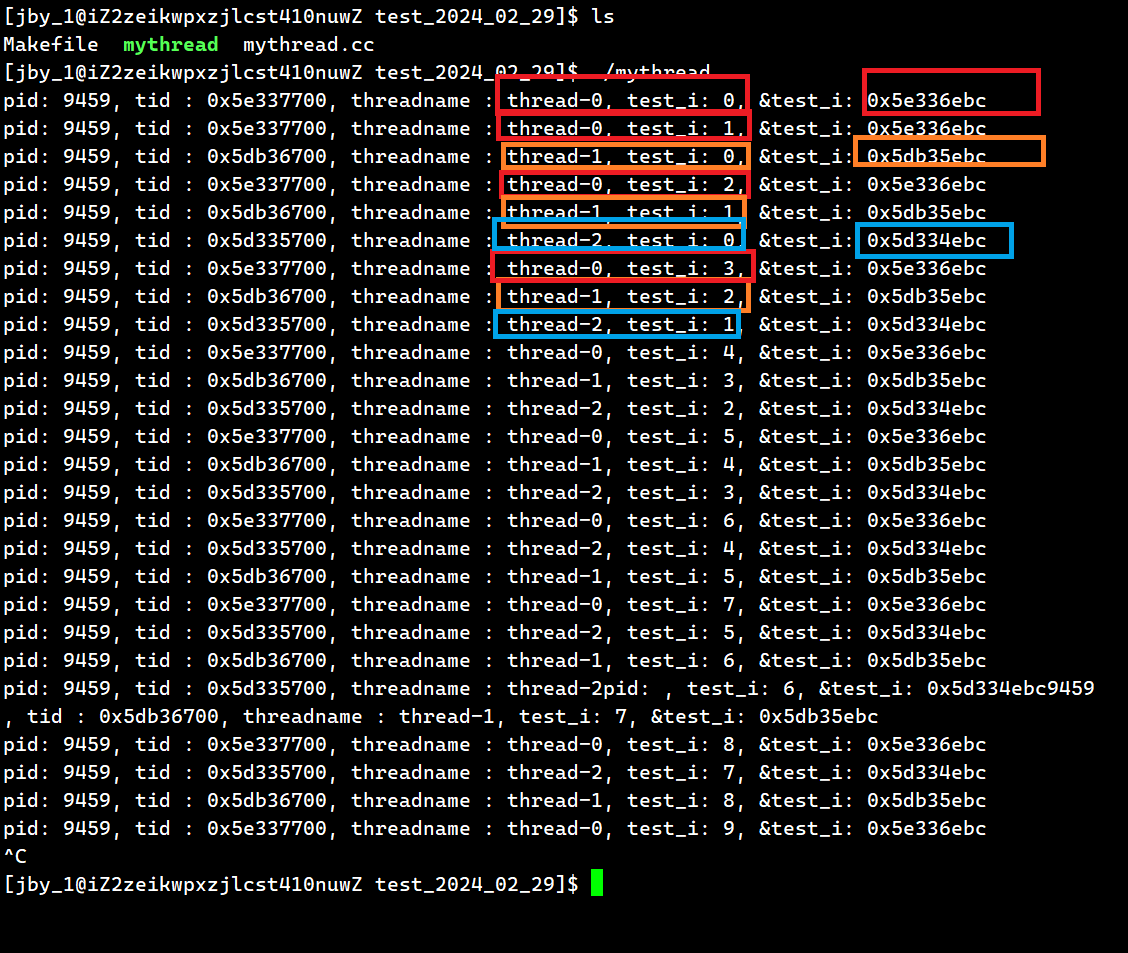
我们可以看到每一个线程的test_i都会独立的增长,并且每个test_i的地址都不一样
这是因为每一个线程都会有自己独立的栈结构。
3.线程之间没有秘密
那么如果我们主线程就想要访问上面线程1的变量,我们可以做到吗?当然可以做到,因为它也在同一个地址空间中。
就比如下面的代码就可以实现主线程访问线程2的变量
#include <iostream>
#include <pthread.h>
#include <string>
#include <cstdlib>
#include <unistd.h>
#include <thread>
#include <vector>
using namespace std;
#define NUM 3
int *p = NULL;
struct threadData
{
string threadname;
};
string toHex(pthread_t tid)
{
char buffer[128];
snprintf(buffer, sizeof(buffer), "0x%x", tid);
return buffer;
}
void* threadRoutine(void* args)
{
int test_i = 0;
threadData *td = static_cast<threadData*>(args);
if(td->threadname == "thread-2")
{
p = &test_i;
}
int i = 0;
while(i < 10)
{
cout << "pid: " << getpid() << ", tid : " << toHex(pthread_self())
<< ", threadname : " << td->threadname
<< ", test_i: " << test_i << ", &test_i: " << &test_i << endl;
sleep(1);
i++;
test_i++;
}
delete td;
return nullptr;
}
void InitThreadData(threadData* td, int number)
{
td->threadname = "thread-" + to_string(number);
}
int main()
{
vector<pthread_t> tids;
for(int i = 0; i < NUM; i++)
{
//注意这种方式不可以,因为都在主线程的栈中定义的变量。一旦for循环每循环一次
//td也要随之销毁掉。这里传入的全部都是野指针了。
// threadData td;
// td.threadname = "";
// td.tid = "";
pthread_t tid;
threadData *td = new threadData;
InitThreadData(td, i);
pthread_create(&tid, nullptr, threadRoutine, td);
tids.push_back(tid);
}
sleep(1); //确保复制成功
cout << "main thread get a thread local value, val: " << *p << ", &val: " << p << endl;
for(int i = 0; i < tids.size(); i++)
{
pthread_join(tids[i], nullptr);
}
return 0;
}
运行结果为:

所以其实在线程和线程当中没有秘密,只不过我们要求每一个线程有自己独立的栈,但是他们还在通一个地址空间中,线程的栈上的数据,也是可以被其他线程看到并且访问的。如果我们一个线程想要访问另一个线程的值,当然可以访问,只不过我们平时禁止这样做。
4.线程的局部存储
如下所示,代码是多线程访问同一个变量的代码
#include <iostream>
#include <pthread.h>
#include <string>
#include <cstdlib>
#include <unistd.h>
#include <thread>
#include <vector>
using namespace std;
#define NUM 3
//int *p = NULL;
int g_val = 100;
struct threadData
{
string threadname;
};
string toHex(pthread_t tid)
{
char buffer[128];
snprintf(buffer, sizeof(buffer), "0x%x", tid);
return buffer;
}
void* threadRoutine(void* args)
{
//int test_i = 0;
threadData *td = static_cast<threadData*>(args);
// if(td->threadname == "thread-2")
// {
// p = &test_i;
// }
int i = 0;
while(i < 10)
{
cout << "pid: " << getpid() << ", tid : " << toHex(pthread_self())
<< ", threadname : " << td->threadname
<< ", g_val: " << g_val << ", &g_val: " << &g_val << endl;
// << ", test_i: " << test_i << ", &test_i: " << &test_i << endl;
sleep(1);
i++;
g_val++;
// test_i++;
}
delete td;
return nullptr;
}
void InitThreadData(threadData* td, int number)
{
td->threadname = "thread-" + to_string(number);
}
int main()
{
vector<pthread_t> tids;
for(int i = 0; i < NUM; i++)
{
//注意这种方式不可以,因为都在主线程的栈中定义的变量。一旦for循环每循环一次
//td也要随之销毁掉。这里传入的全部都是野指针了。
// threadData td;
// td.threadname = "";
// td.tid = "";
pthread_t tid;
threadData *td = new threadData;
InitThreadData(td, i);
pthread_create(&tid, nullptr, threadRoutine, td);
tids.push_back(tid);
}
sleep(1); //确保复制成功
// cout << "main thread get a thread local value, val: " << *p << ", &val: " << p << endl;
for(int i = 0; i < tids.size(); i++)
{
pthread_join(tids[i], nullptr);
}
return 0;
}
运行结果为:

所以全局变量是被所有的线程看到并同时访问的。
这个g_val就是共享资源。
但是如果一个线程想要一个私有的全局变量呢?
所以我们可以下面这样做:在全局变量之前加上**__thread**
#include <iostream>
#include <pthread.h>
#include <string>
#include <cstdlib>
#include <unistd.h>
#include <thread>
#include <vector>
using namespace std;
#define NUM 3
//int *p = NULL;
__thread int g_val = 100;
struct threadData
{
string threadname;
};
string toHex(pthread_t tid)
{
char buffer[128];
snprintf(buffer, sizeof(buffer), "0x%x", tid);
return buffer;
}
void* threadRoutine(void* args)
{
//int test_i = 0;
threadData *td = static_cast<threadData*>(args);
// if(td->threadname == "thread-2")
// {
// p = &test_i;
// }
int i = 0;
while(i < 10)
{
cout << "pid: " << getpid() << ", tid : " << toHex(pthread_self())
<< ", threadname : " << td->threadname
<< ", g_val: " << g_val << ", &g_val: " << &g_val << endl;
// << ", test_i: " << test_i << ", &test_i: " << &test_i << endl;
sleep(1);
i++;
g_val++;
// test_i++;
}
delete td;
return nullptr;
}
void InitThreadData(threadData* td, int number)
{
td->threadname = "thread-" + to_string(number);
}
int main()
{
vector<pthread_t> tids;
for(int i = 0; i < NUM; i++)
{
//注意这种方式不可以,因为都在主线程的栈中定义的变量。一旦for循环每循环一次
//td也要随之销毁掉。这里传入的全部都是野指针了。
// threadData td;
// td.threadname = "";
// td.tid = "";
pthread_t tid;
threadData *td = new threadData;
InitThreadData(td, i);
pthread_create(&tid, nullptr, threadRoutine, td);
tids.push_back(tid);
}
sleep(1); //确保复制成功
// cout << "main thread get a thread local value, val: " << *p << ", &val: " << p << endl;
for(int i = 0; i < tids.size(); i++)
{
pthread_join(tids[i], nullptr);
}
return 0;
}
运行结果为

这样的对一个变量加上__thread的,我们将这个称作线程的局部存储
而我们前面正好就说了:在线程的tcb中,就有一个线程的局部存储

所以我们可以明显看到,这个变量应该就在动态库中存储着。
这个__thread其实就是编译器编译时候的一个默认选项。
我们也可以直接从前面的两个图中的地址可以看出,没加这个选项的地址比较小(在静态区),加上这个选项地址比较大(处于堆栈之间的共享区)。
注意:这个__thread选项只能定义内置类型,不能用来修饰自定义类型
有了这个选项,对于某些只属于这个线程的变量,我们可以使用这个__thread来进行修饰,让它变为局部存储。这样的好处是可以不用频繁的去调用某些系统调用接口。
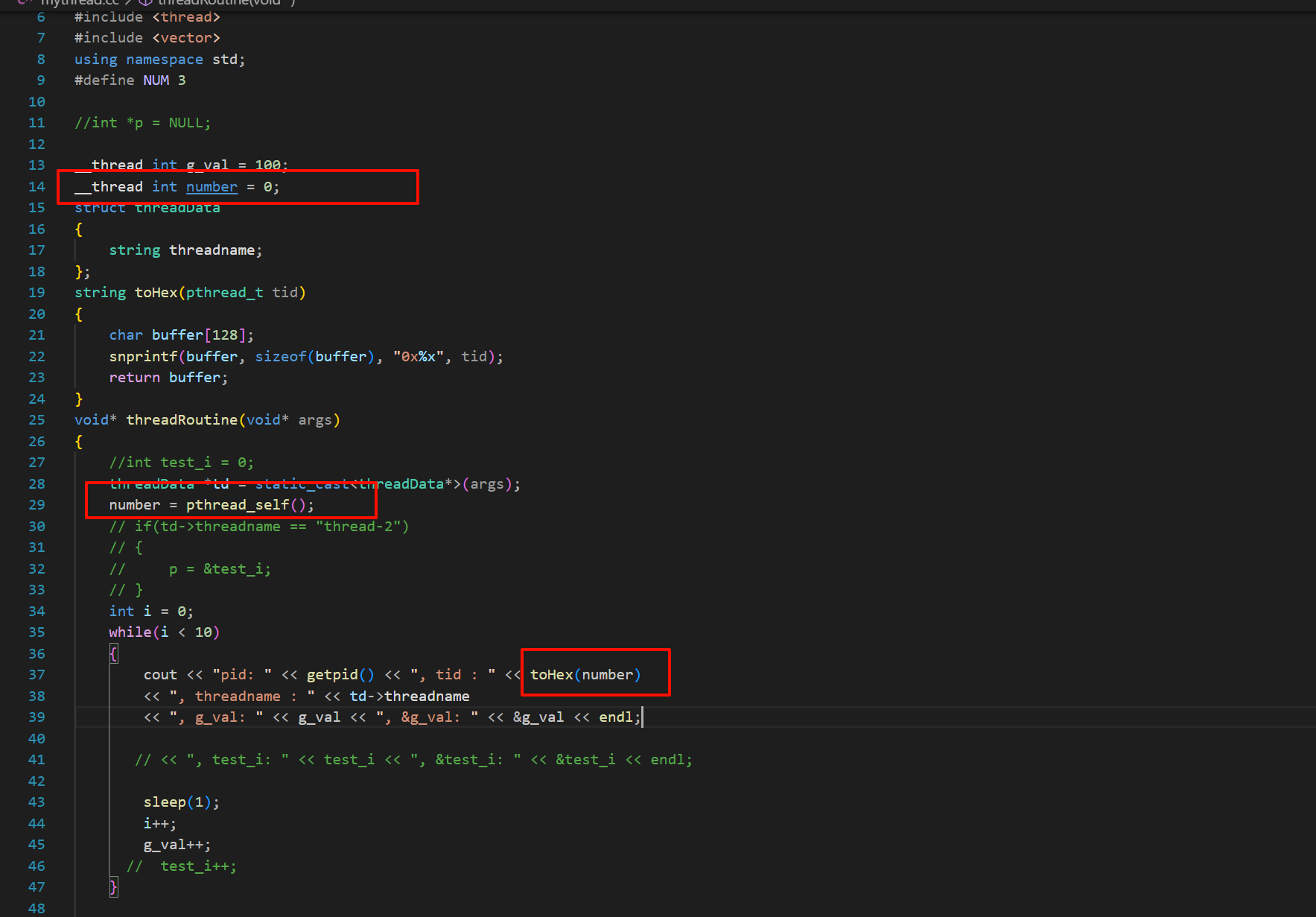
这样就实现了线程级别的全局变量,和其他线程互不干扰。
二、分离线程
- 默认情况下,新创建的线程是joinable的,线程退出后,需要对其进行pthread_join操作,否则无法释放资源,从而造成系统泄漏。
- 如果不关心线程的返回值,join是一种负担,这个时候,我们可以告诉系统,当线程退出时,自动释放线程资源
#include <pthread.h>
int pthread_detach(pthread_t thread);
//Compile and link with -pthread.
这个分离接口既可以由主线程来做,也可以由其他新线程来做
我们可以先在join前先分离一下,看看是什么结果
#include <iostream>
#include <pthread.h>
#include <string>
#include <cstdlib>
#include <unistd.h>
#include <thread>
#include <vector>
#include <cstring>
#include <cstdio>
using namespace std;
#define NUM 3
//int *p = NULL;
__thread int g_val = 100;
__thread int number = 0;
struct threadData
{
string threadname;
};
string toHex(pthread_t tid)
{
char buffer[128];
snprintf(buffer, sizeof(buffer), "0x%x", tid);
return buffer;
}
void* threadRoutine(void* args)
{
//int test_i = 0;
threadData *td = static_cast<threadData*>(args);
number = pthread_self();
// if(td->threadname == "thread-2")
// {
// p = &test_i;
// }
int i = 0;
while(i < 10)
{
//cout << "number: " << number << ", pid: " << getpid() << endl;
printf("number: 0x%x, pid: %d\n", number, getpid());
//cout << "pid: " << getpid() << ", tid : " << toHex(number) << ", threadname : " << td->threadname << ", g_val: " << g_val << ", &g_val: " << &g_val << endl;
// << ", test_i: " << test_i << ", &test_i: " << &test_i << endl;
sleep(1);
i++;
g_val++;
// test_i++;
}
delete td;
return nullptr;
}
void InitThreadData(threadData* td, int number)
{
td->threadname = "thread-" + to_string(number);
}
int main()
{
vector<pthread_t> tids;
for(int i = 0; i < NUM; i++)
{
//注意这种方式不可以,因为都在主线程的栈中定义的变量。一旦for循环每循环一次
//td也要随之销毁掉。这里传入的全部都是野指针了。
// threadData td;
// td.threadname = "";
// td.tid = "";
pthread_t tid;
threadData *td = new threadData;
InitThreadData(td, i);
pthread_create(&tid, nullptr, threadRoutine, td);
tids.push_back(tid);
}
usleep(100000); //确保复制成功
// cout << "main thread get a thread local value, val: " << *p << ", &val: " << p << endl;
for(auto i : tids)
{
pthread_detach(i);
}
for(int i = 0; i < tids.size(); i++)
{
int n = pthread_join(tids[i], nullptr);
printf("n = %d, who = 0x%x, why: %s\n", n , tids[i], strerror(n));
}
return 0;
}
运行结果为:

可见我们将线程给detach以后,再去join就不会成功了
我们也可以线程自己把自己分离掉
#include <iostream>
#include <pthread.h>
#include <string>
#include <cstdlib>
#include <unistd.h>
#include <thread>
#include <vector>
#include <cstring>
#include <cstdio>
using namespace std;
#define NUM 3
//int *p = NULL;
__thread int g_val = 100;
__thread int number = 0;
struct threadData
{
string threadname;
};
string toHex(pthread_t tid)
{
char buffer[128];
snprintf(buffer, sizeof(buffer), "0x%x", tid);
return buffer;
}
void* threadRoutine(void* args)
{
pthread_detach(pthread_self());
//int test_i = 0;
threadData *td = static_cast<threadData*>(args);
number = pthread_self();
// if(td->threadname == "thread-2")
// {
// p = &test_i;
// }
int i = 0;
while(i < 10)
{
//cout << "number: " << number << ", pid: " << getpid() << endl;
printf("number: 0x%x, pid: %d\n", number, getpid());
//cout << "pid: " << getpid() << ", tid : " << toHex(number) << ", threadname : " << td->threadname << ", g_val: " << g_val << ", &g_val: " << &g_val << endl;
// << ", test_i: " << test_i << ", &test_i: " << &test_i << endl;
sleep(1);
i++;
g_val++;
// test_i++;
}
delete td;
return nullptr;
}
void InitThreadData(threadData* td, int number)
{
td->threadname = "thread-" + to_string(number);
}
int main()
{
vector<pthread_t> tids;
for(int i = 0; i < NUM; i++)
{
//注意这种方式不可以,因为都在主线程的栈中定义的变量。一旦for循环每循环一次
//td也要随之销毁掉。这里传入的全部都是野指针了。
// threadData td;
// td.threadname = "";
// td.tid = "";
pthread_t tid;
threadData *td = new threadData;
InitThreadData(td, i);
pthread_create(&tid, nullptr, threadRoutine, td);
tids.push_back(tid);
}
usleep(100000); //确保复制成功
// cout << "main thread get a thread local value, val: " << *p << ", &val: " << p << endl;
// for(auto i : tids)
// {
// pthread_detach(i);
// }
for(int i = 0; i < tids.size(); i++)
{
int n = pthread_join(tids[i], nullptr);
printf("n = %d, who = 0x%x, why: %s\n", n , tids[i], strerror(n));
}
return 0;
}
运行结果也是一样的

当线程内部的函数结束之后,会自动释放掉线程的资源
我们上面两个例子会发现一个问题,那就是分离线程应该会在线程跑完之后进行回收的。但是为什么还没有跑完就被回收了呢。这是因为我们在下面就有一个join,去等待了线程了。它在等待的发现已经被分离了。就不是阻塞式的等了,立马就出错返回了。出错返回后,这个for循环立刻就跑完了,跑完之后,主线成结束了,所以进程就结束了。所以虽然上面的线程还没有跑完,但是进程已经结束了,这些资源也就被释放了。
这里也告诉我们,即便我们的主线程将线程分离了,不用等待了,但是我们还是要自己去确保主线程是最后退出的,否则会出现一些问题。
所以线程是否被分离其实就是一个属性状态。它一定是要被存储的。所以线程分离其实就是将这个属性进行了修改

